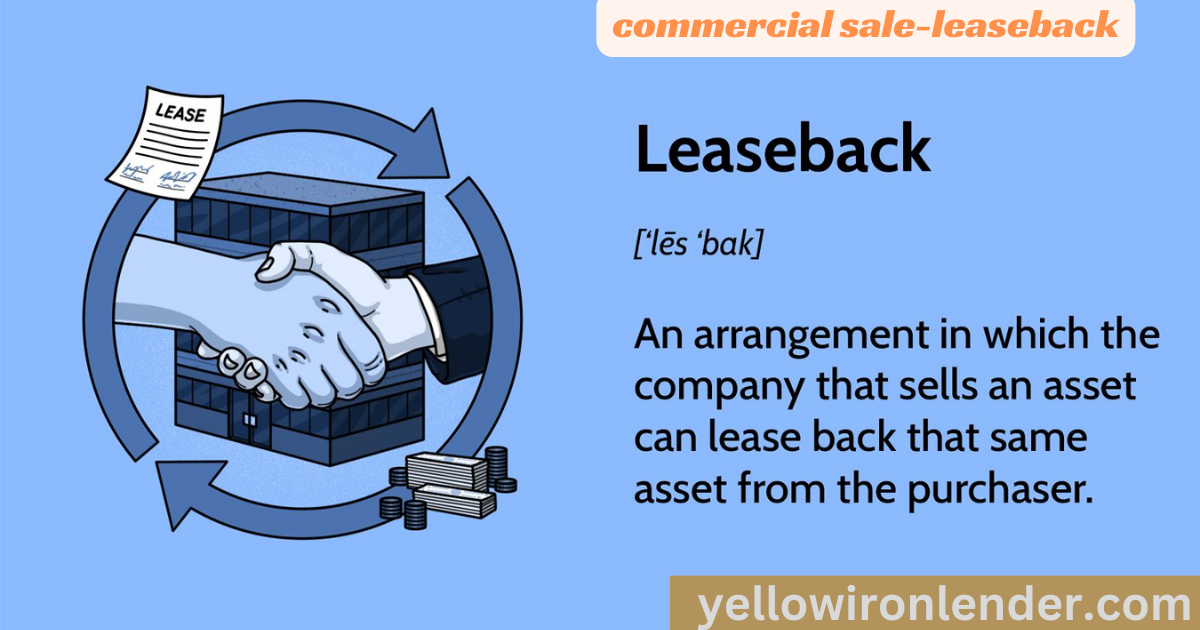commercial sale-leaseback
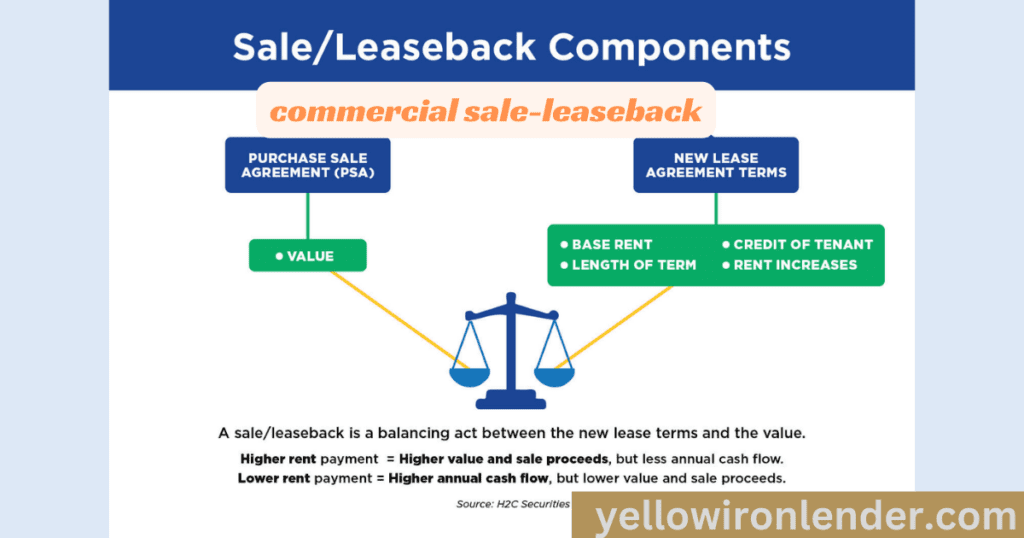
A commercial sale-leaseback is a financial transaction in which a company sells a property it owns and then immediately leases it back from the new owner. This arrangement allows the company to free up capital tied up in real estate while retaining the use of the property for its operations.
Here’s how a typical commercial sale-leaseback works:
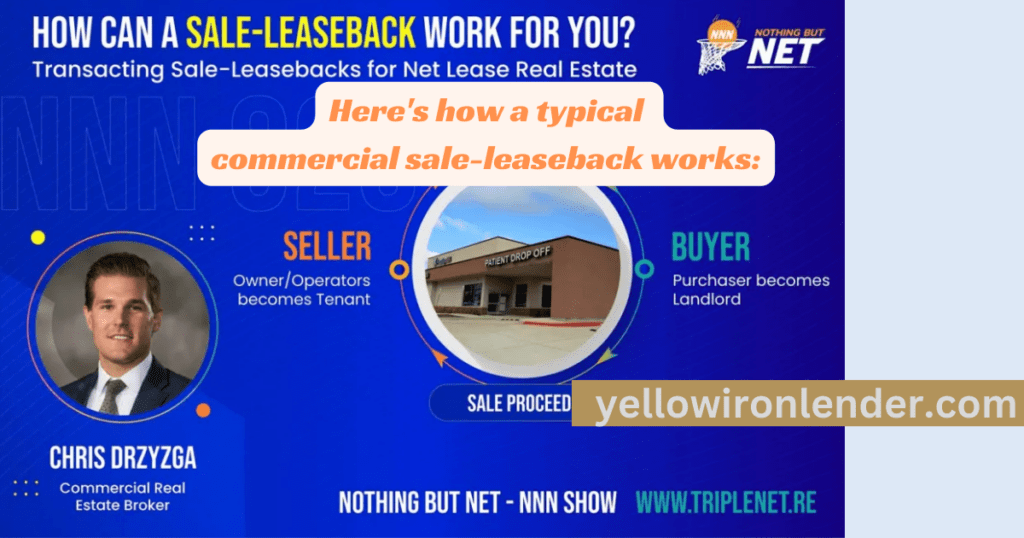
1. Company Ownership: A company owns a commercial property, such as an office building, retail space, or manufacturing facility. However, it may need additional capital for expansion, debt reduction, or other purposes.
2. Sale Agreement: The company decides to sell the property to an investor or a real estate firm. The terms of the sale, including the purchase price, lease terms, and other conditions, are negotiated between the parties involved.
3. Sale of Property: The property is sold to the investor or real estate firm. The company receives a lump sum payment from the sale, which it can use for its intended purposes.
4. Leaseback Agreement: Simultaneously with the sale, the company enters into a lease agreement with the new owner, allowing it to continue using the property for its operations. The lease terms typically include details such as lease duration, rent payments, responsibilities for maintenance and repairs, and any options for renewal.
5. Benefits for the Company: By completing a sale-leaseback transaction, the company achieves several benefits:
– Immediate Capital: The company receives a cash infusion from the sale of the property, which can be used for various purposes, such as expanding operations, paying off debt, or investing in new projects.
– Off-Balance Sheet Financing: Since the property is no longer owned by the company, it may improve financial ratios and reduce debt levels, making it more attractive to investors and creditors.
– Operational Flexibility: The company can continue using the property without interruption, allowing it to focus on its core business activities.
– Tax Benefits: Depending on the jurisdiction and the specific terms of the leaseback arrangement, the company may be able to deduct lease payments as operating expenses, potentially reducing its tax liability.
6. Benefits for the Investor: The investor or real estate firm acquires a property with a stable tenant in place, providing a predictable stream of rental income over the lease term. Additionally, the investor may benefit from potential appreciation in the property’s value over time.
Overall, commercial sale-leaseback transactions offer a flexible financing option for companies seeking to unlock the value of their real estate assets while maintaining operational control. However, it’s essential for both parties to carefully consider the terms and implications of the transaction to ensure it aligns with their respective objectives and risk tolerances. Consulting with legal, financial, and real estate professionals can help parties navigate the complexities of a sale-leaseback arrangement and maximize its benefits.
Why should you consider a sale-leaseback?
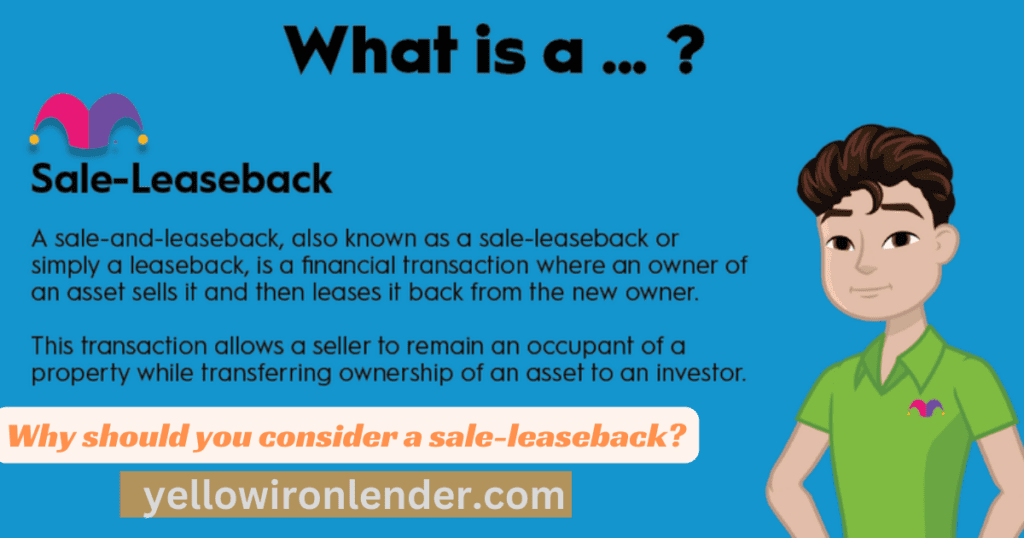
There are four main reasons to consider a sale leaseback for commercial real estate.
1 Freeing Up Capital
Sale-leasebacks allow sellers to free up capital by converting illiquid real estate assets into capital that can be used for a variety of purposes. For example, funds from a sale-leaseback transaction can be reinvested into internal growth initiatives, the company’s balance sheet, high-ROI business segments, stock buybacks, or financing M&A acquisitions, among other things.
2 Current Market Conditions
Given the current real estate market, sale-leasebacks can often reduce the total cost of capital, especially in the mid-market segment. Last year, the value of some companies that own real estate soared as commercial real estate market-to-market ratios (also known as cap rates) fell to their lowest levels in a decade. For example, capitalization rates for industrial real estate tend to be below 6%, and core market interest rates regularly fall below 5%.
Sale-leaseback is an alternative form of financing with a cap rate equal to the cost of capital for this source of financing. Given that the average cost of capital for many mid-market companies consistently exceeds 8% to 12%, sale-leasebacks offer a cheaper source of capital than traditional debt, especially given the rising interest rates in today’s debt markets. It could be a form. Additionally, sale-leaseback transactions can provide financing for 100% of the asset, whereas traditional debt is often limited to 70% of his LTV, with restrictive debt covenants, interest rate risk, and balloon payments. accompanies. For these reasons, sale-leasebacks can help reduce a company’s weighted average cost of capital (WACC).
3 Capture Value Arbitrage
Earnings before interest, taxes, depreciation, and amortization (EBITDA) is widely used as a common measure of a company’s profitability. A company’s EBITDA multiple is a metric that compares corporate value and EBITDA.
Sale-leasebacks help achieve value arbitrage between a company’s EBITDA multiple and real estate multiples. If you are considering selling your business and owning real estate in which it operates, a sale-leaseback strategy can increase the implied EBITDA multiple and overall value of your business. If a sale-leaseback transaction is structured effectively, a smart business owner can increase its EBITDA multiple from 12x to 20x, considering the return available to the sale-leaseback investor on the property secured by the lease.
You may be able to achieve a comparable price for your real estate. By companies with commercial bonds and strong balance sheets. This multiple is typically much higher than the company’s existing EBITDA multiple. This creates arbitrage opportunities when business owners trade EBITDA on rent and execute a sale-leaseback process to increase shareholder value without changing business operations.
4 Reduce risk
Sale-leasebacks can help reduce the risk of your business.
One of the risks that sale-leaseback reduces is operational risk for the company that owns the property. Business needs may change in the future. Your business may require a different type of building, more space, or a change in geographic location.
In addition, sale-leasebacks can help protect a company from loss in the value of its assets. As a property owner, your business relies on the uncertainty of the future value of your property. Property ownership is attractive these days, but the future is uncertain. Because real estate values rise and fall with the market, many owners want to avoid the possibility of losing the value of their investment due to an economic downturn.
Additionally, owning real estate requires human and financial capital. Even desirable properties in desirable markets are complex and require continued attention and focused asset management efforts to maintain their value. In most cases, owners of professional medium-sized companies are not experienced property owners and do not have the time, experience, and desire to actively manage such large properties. Sale-leasebacks offer business owners and managers the opportunity to transfer the risk of real estate ownership to a buyer while eliminating the stress associated with ongoing asset and property management.
What are the advantages and disadvantages of sale-leaseback?
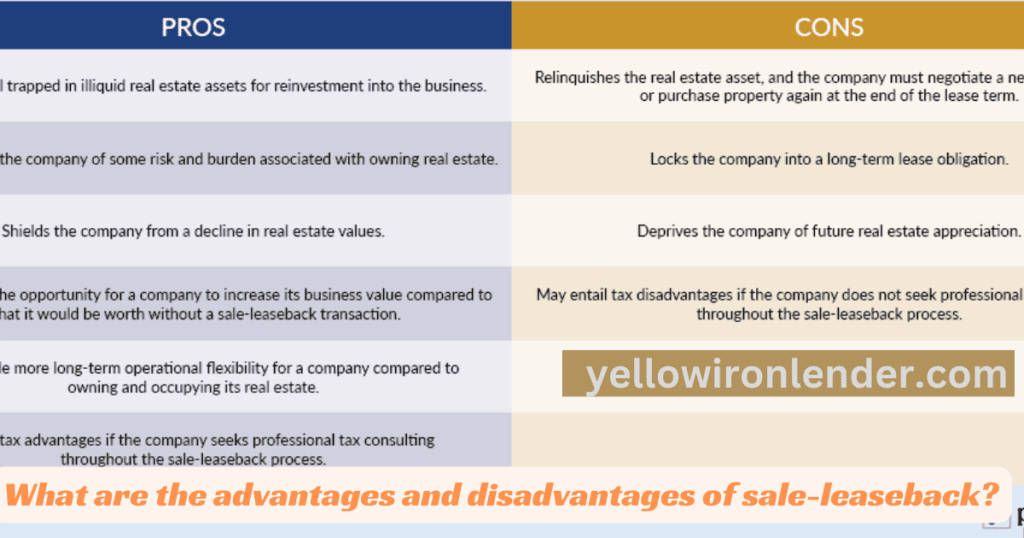
Although the benefits of a sale leaseback are numerous, owners should be aware of the potential downsides of leasing, the opportunity costs if the asset continues to appreciate after the sale, and the potential loss if the transaction is conducted without supervision. Possible tax penalties must be considered. A reliable tax accountant will be in charge. The sale-leaseback approach may not be suitable for every business, but a trusted real estate advisor can help you determine the best option for your business.
Conclusions:
Sale leasebacks can be a valuable tool to free your business from the burden of owning real estate, reduce your cost of capital without a debt commitment, and inject valuable liquidity to help your business grow and achieve its goals… However, a successful transaction requires an understanding of the local real estate market and its value factors for both sellers and potential buyers.
This could be a truly unique opportunity to leverage the treasure trove of real estate you own and transform the future of your business. Plante Moran Realpoint’s real estate professionals have helped clients across the country increase the value of their properties through sale-leasebacks and other real estate transactions. Contact our team today to discuss your options.
FAQs:
What is a Commercial Leaseback?
Leaseback (or Sale-Leaseback): Definition, Benefits, and Examples
Leaseback is an arrangement in which a company selling an asset can lease back the same asset from a buyer. In a leaseback (also known as a sale-leaseback), contract details such as lease payments and lease terms are determined immediately after the asset is sold.
What is an example of a sale-leaseback?
As an example of a sale-leaseback agreement, we can look back to the transaction Sears completed in 2015. As part of this transaction, Sears sold 235 of its stores to Seritage Growth Properties and immediately began leasing the properties from Seritage for continued operations.
Is sale/leaseback a good idea?
The main benefit of sale-leaseback transactions is access to working capital, which is why they are a popular choice for companies looking to grow. By selling your real estate (where your business is conducted) and renting it back, you can get cash that was previously tied up in your real estate.
What types of sale/leaseback are there?
Types of Sale-Leaseback Transactions
There are two types of sale-leaseback transactions in the industry: operating leases and capital leases. Sale and leaseback agreements are often structured as operating leases, but may also be treated as capital leases.
